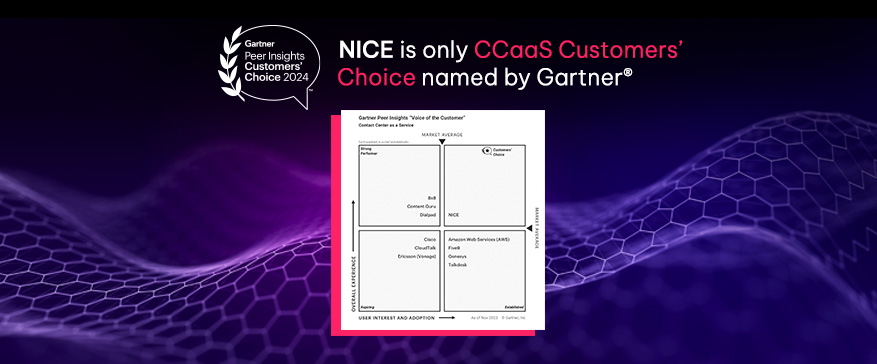

Four Major Trends in Channels
To make it easier to evaluate and identify trends across all these different channels, we also looked at groups of channels by type including digital channels, AI-powered channels, social media (private and public), as well as self-service vs. agent-assisted channel groupings. This helped us pinpoint the most important findings and several major trends when sifting through all the data from the global study of over 1,000 respondents in United States, Canada, United Kingdom, and Australia. Companies report higher preference for digital channels compared to phone interactions with a customer service agent: down 11 points in this year’s study.TREND #1: All about chat—and chatbots!



TREND #2: AI-powered customer service channels
The majority of businesses—6 in 10—are now offering at least one AI-powered channel for customer-facing service (this is a significant increase in one year—up 16 points since 2019). Artificial intelligence (AI) channels include chatbots, conversational AI IVR and home electronic assistants (for example, Amazon Alexa, Echo or Google Home).
We also looked at the transfer rate from any AI-powered customer service interaction to a customer service agent. Respondents estimate that about one in five customers get transferred from conversational IVR (19%) and chatbots (20%). Conversely, the containment (meaning that the interaction did not result in a transfer or escalation) was nearly 80%. Companies who offer those channels can benefit from these channels as they are handled at lower cost, keeping agents available for more complex customer interactions.

TREND #3: Two Mobile Channels Growing Faster than All Other Digital Channels
The two fastest growing channels (among all 13 individual channels) are mobile text and mobile apps. 49% of companies are now offering text messaging (up from 38% one year ago). Mobile apps for self-service are up significantly as well with 56% of companies saying that their customers can use the company’s mobile app (up from 48% in 2019).Satisfaction for both channels is also up impressively. Text messaging improved to 40% of companies reporting satisfaction levels of 9 or 10. Mobile apps are also up significantly with 48% of companies reporting satisfaction at 9 or 10. Of all 13 channels, mobile apps have the highest estimated NPS scores at 44.38% of companies are investing in improving the mobile app experience
TREND #4: Bring on More Self-Service
Another major shift was a preference for self-service channels compared to agent-assisted channel: increasing by 15 percentage point from 28% in 2019 to 43% in 2020. We see this as aspirational and an indicator of the pressure companies face as interaction volumes increase coupled with the need to control operational costs. According to the survey, of contact centers reported an increase in digital interaction volumes during the global pandemic. While companies would like to shift more towards self-service, the actual percentage of self-service vs agent-assisted interactions holds steady with no change in the overall percent of interactions that were handled by contact centers. Today, 61% of interactions are agent-assisted vs 39 percent are through self-service channels. Investments in self-service channels will help. Gartner suggests, “Combining online chat with other self-service options such as searchable FAQs can reduce volumes an estimated 20-40%, therefore helping to lower handle times and cost per contact across all channels.[4]” In this year’s NICE CX Benchmark, 58% of companies indicated that they plan to improve customer experience by investing in improving the website experience.Empower Contact Center Agents to be Digital Experience Pros
Let customers choose how they communicate with you, and then give them an awesome experience without missing a beat. To do that, you want to empower you contact center agents to create extraordinary customer interactions across any channel. CXone Omnichannel Routing provides your agents with full customer context sentiment, and, conversation history with an integrated Customer Card—powered by optional pre-built CRM integrations—all in one consolidated agent desktop. By connecting information in your automatic contact distributor with customer data, agents can be ready to handle large contact volumes quickly and efficiently, while personalizing each interaction to increase customer satisfaction.81% of organizations say their agents can handle 1-4 digital interactions concurrently.
The best call center software will give your agents streamlined and efficient tools to handle all types of digital channels as well as advanced analytics to fast track your quality management program. Lauren Comer recently posted an excellent blog article about the connection between digital channels, agent preparation to handle those channels, and the quality management imperatives for digital customer service.Another finding from the study commissioned with Forrester Research and whitepaper was the ultimate benefits of AI: “While AI will handle simpler, repetitive interactions, agents are still needed to manage the more complex, higher-value interactions that require advanced skills and additional time to resolve. But all is well as agents prefer to spend their time on more impactful interactions than provide repetitive service for easy issues. So ironically enough, chatbots do allow human agents to feel less like automatons.”What’s in the Research for You
On a global level, trends among contact centers are interesting reading, but what’s really in here for you and your business? For your challenges and plans? Definitely not every page and every chart, but here’s a reference guide to the report, so you can skip to the places that are most relevant today to your business today.- Fastest growing digital channels – are you there – page 9
- What investments are you making – page 19
- How are you doing across the channels you offer – key metrics including satisfaction, first contact resolution and NPS – page 8
- Looking at self-service to reduce costs – yes many of you are – but what is first contract resolution in self-service by channel – page 8
- Interested in artificial intelligence to improve CX – pages 16, 17, 20
- Looking for industry data on social media – pages 10, 18
- Primarily operating in US or Canada – detailed charts for US page 22 and Canada page 28
- Operating or expanding to UK or Australia – detailed charts for UK page 24 and Australia page 26
About the NICE CX Benchmark
The NICE Customer Experience (CX) Transformation Benchmark is fielded in the US, Canada, UK, Australia with two surveys, one among consumers and one among contact center decision makers. The 2020 business wave of 1,000 global contact center decision makers was fielded in April 2020. Trends reported are based on 2019 business wave that was fielded November to December 2018.We are now measuring 13 different channels, after adding two channels to the 2020 survey including conversational AI and private social messaging apps. (Previously social media included both public/private combined into one.)Agent-assisted channels (7) including phone, email, online chat, text, social media, social messaging, video chatSelf-service channels (6) including website, IVR, mobile app, automated assistant/chatbot, conversational AI/IVR, home electronic assistant**New grouping in 2020 report** Digital channels (11) including both agent-assisted digital—email, online chat, text, social media, social messaging, video chat—and self-service digital—website, mobile app, automated assistant/chatbot, home electronic assistant**New grouping in 2020 report** Traditional channels (2) including phone and IVR**New grouping in 2020 report** Artificial intelligence channels (3) including automated assistant/chatbot, conversational AI IVR, and home electronic assistant1 https://www.gartner.com/en/webinars/27111/how-chatbots-provide-real-value-for-your-customers-and-organizat
2 https://www.gartner.com/smarterwithgartner/5-trends-drive-the-gartner-hype-cycle-for-customer-service-and-support-technologies-2020/
3 https://www.gartner.com/en/insights/accelerate-enterprise-digital-investments-during-covid-19
4 https://www.gartner.com/en/marketing/insights/daily-insights/how-digital-is-your-customer-service









